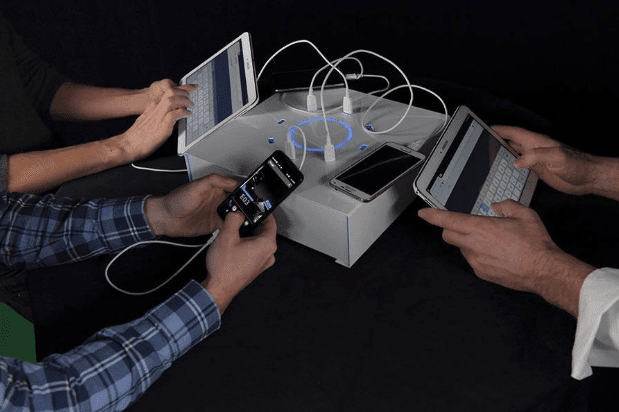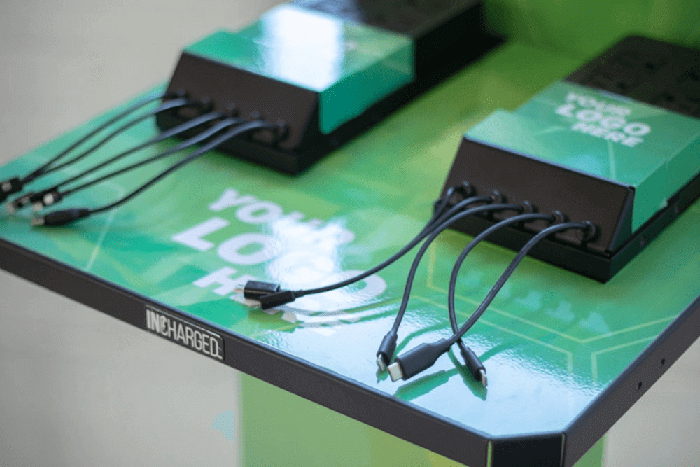Scientists at Nanyang Technology University in Singapore have created batteries that can be charged up to 70% in just two minutes.
Rapid cell phone charging technology
In the new technology, the anodes in lithium-ion batteries (the current industry standard) are replaced with a new titanium dioxide gel material. Titanium Dioxide can be found in sunscreen and often as a food additive – it is cheap, safe, and found in soil. The scientists at NTU turned the titanium dioxide into nanotubes which speeds up the chemical reactions, making charging extremely quick.
Since the batteries last over 10 times longer than the current lithium-ion technology we use, there will also be a dramatic reduction in the toxic waste generated by disposed batteries. What’s more, the technology is very easy to manufacture – battery manufacturers will be able to integrate the new titanium dioxide gel into their production processes with minimal changes in equipment and procedures.
They’re still at least two years away from production, but we’re already thinking of how we’ll be spending all that free time we don’t have to waste waiting for our phones to charge!
All You Need to Know About Charging Technology
When you are buying a new smartphone -what specification do you care about? Right from camera specifications to screen size, processors, and so more -the main feature that most smartphone buyers out there tend to look out for is the overall battery life. In the recent years, the idea of how fast the batteries are able to charge is a crucial factor. Everyone wants a smartphone that is capable of charging fast for improved results. The only thing is that it is quite a challenging task to come across a reliable fast-charging technology in smartphones.
Charging standards out there tend to offer a complicated blend of physics and chemistry -each featuring its own sets of restrictions along with the presence of poorly organized compatibilities. Even worse, the smartphone manufacturers are known to provide access to confusing labels on the respective charging technology.
So, how does the technology of rapid charging work? In this post, we will help you unravel the mysteries of rapid smartphone charging along with the innovative rapid charging station.

Access to the Rapid Charging Station Technology
Both casual, as well as enthusiast smartphones users, are known to search for prolonged battery life. While the assurance of fast charging helps us to top up the day every day. When the smartphone has the absence of the replaceable batteries, it implies that typically lithium-ion cells that are enclosed in the smartphones, will age as well as deteriorate.
If you have been using a smartphone for more than a year, then you might have noticed that the cell phone’s battery will not last longer in comparison to its performance as a brand-new model. After 1-2 years down the line, most smartphone models out there tend to struggle to make through the entire day on a single charge. With age, the smartphone’s battery capacity seems to deteriorate. Therefore, you must be aware of the entire technology of rapid charging through the utilization of fast phone charging station.
How does Charging Technology Work?

The concept of rapid charging is known to increase the overall current that is transmitted to the battery for filling up its capacity quickly and efficiently. The standard USB charging specification s capable of sending just around 0.5A (amps) while utilizing a mere value of 2.5 Watts (W). The latest range of rapid charging technology is known to boost the available charging figures. For instance, the innovative SuperCharge technology by Huawei producing 10V & 4A generates around 40 W. At the same time, the revolutionary Adaptive rapid Charging technology by Samsung is capable of producing around 15W of electric juice. All fast-charging solutions are known to share a common charging theme -for delivering more power.
USB Power Delivery
USB-PD (USB Power Delivery) is regarded as the official specification for ensuring rapid charging as published by the USB-IF in the year 2012. This advanced charging standard can be utilized by any available device. The only requirement is that the smartphone manufacturers have included the necessary software as well as circuitry for providing access to the rapid charging technology. Just like other rapid charging standards, USB-PD helps in implementing a specific data protocol for establishing communication between the smartphone and the charger. This helps in negotiating the maximum tolerable delivery of power for both the handset and the charger.
The revolutionary technology of USB power delivery helps in augmenting the standard USB charging speeds for delivering around 100W of electric power. The value of power that is available for charging is divided into various power ratings -operating at different voltages. Both 7.5W & 15W power value or more are regarded as the best values for smartphones. The values that are above 27W are regarded as ideal for laptops as well as other higher power-requiring devices. The given charging standard is also capable of supporting bi-directional power capability while enabling your smartphone to charge other devices as well.
Rapid Charging Stations

The various types of rapid smartphone charging stations are becoming highly popular all across the world. InCharged -a leading service provider of top-class charging stations, unveils its innovative series of smartphone charging stations that offer the ability to fast-charge multiple devices. Using the same, the users can be assured of getting access to superior charging stations that charge your phone & other mobile devices instantly & conveniently.
Some of the advanced benefits of the revolutionary charging stations for your smartphones are:
- Ease of Use: The charging stations by InCharged are immensely easy to use. Once these stations have been installed, the general public can look forward to making use of the device almost instantly and conveniently.
- Ease of Availability: The advanced range of phone charging stations are made available to the general public for the overall ease of use.
- Charging Technology: The charging stations by InCharged are known to offer access to faster charging technology. This implies that you are no longer required to leave the device on charge for too long.
Qualcomm Quick Charge
The proprietary Quick Charge technology by Qualcomm has been the default standard in the mobile phone industry for quite a long time. With the advent of the USB Power Delivery support, this fast charging capability only skyrocketed effectively. The latest version of the 4.0+ Quick Charge revision serves to be compatible with Power Delivery. This compatibility allows for maximum speeds for charging your smartphones while providing access to a comprehensive range of reliable support.
In most of the Snapdragon processors by Qualcomm, Quick Charge serves to be an optional feature. Therefore, a smartphone that features a Qualcomm chip does not imply that it is Qualcomm-compatible at the same time. Several smartphone models out there are known to feature the Quick Charge support. There is also an array of legacy chargers along with several third-party accessories that help in boosting the overall popularity of this charging standard.
Charging a Lithium-ion Battery
Now that you are aware of the fast charging standards, let us enlighten you about the ways in which fast-charging boosts the overall charging cycle of the smartphone. The lithium-ion batteries that are utilized in the smartphones and other devices are not known to charge in a linear fashion. The entire charging cycle gets broken down into two unique phases.
The first phase involves the process of increasing the voltage -also referred to as the constant current phase. The voltage of the battery increases steadily -from being its lowest at 2V to rising up to a peak value of 4.2V during the charging phase. The variation would depend on the exact type of battery. The battery is known to draw the highest peak current during the transition phase. This phase is known to remain constant until the peak point of the battery voltage.
The voltage eventually becomes constant while the current starts falling. The batteries that get to charge beyond the given point end up drawing less current. Therefore, such batteries charge slower.
On the other hand, this technology by most of the chargers or charging stations is known to harness the potential of the constant current phase. They tend to pump a maximum value for current into the respective battery before the same reaches the point of peak voltage. Therefore, most of the advanced fast technologies tend to be highly effective when the battery tends to be less than 50% full. These tend to have no impact unless you cross the 80% mark. At the same time, the process of constant current charging serves as the least period for determining the long-term health of the batteries. A higher value for constant voltage along with increasing heat might be detrimental to the overall health of the batteries.
In the end, the total amount of current, as well as voltage, that gets passed to the battery is known to be controlled with the help of a charger controller mechanism that is made possible inside the phone. When the controller is coordinated with voltage and temperature sensors, it is capable of managing the total amount of current for optimizing the charging speed as well as long-term health of the smartphone.
Top Ways to Maximize the Battery Life of Your Smartphone
If you wish to maximize the overall lifespan of your smartphone’s battery, here are some innovative ways:
- Make the most of the capability offered by the high-end models for smartphone charging stations that deliver improved performance when it comes to the speed of charging. You can browse through the unique range of smart charging stations offered by InCharged to ensure improved smartphone charging performance.
- Partial courser is considered an ideal solution for the lithium-ion batteries. At the same time, this charging mechanism is also known to deliver a potential range of benefits to the overall lifecycle of the smartphone’s batteries. As the lithium-ion batteries approach to being empty, they start drawing constant current while operating at a lower value of voltage. The value of voltage increases gradually during the charging of the smartphone’s cell. It gets leveled off at around 60-70 percent of the charge as the current starts falling again till the battery’s capacity becomes full.
- While you might find it convenient to charge your phone overnight, it is considerably harmful for your phone’s life. Moreover, excess heat gets dissipated during the process and this might damage the internal structure of the phone. In idea cases, the device is expected to stop courser when it reaches its 100% capacity. However, it only turns back the process of charging the circuit to its top range.
Make the most of the revolutionary charging technology!

